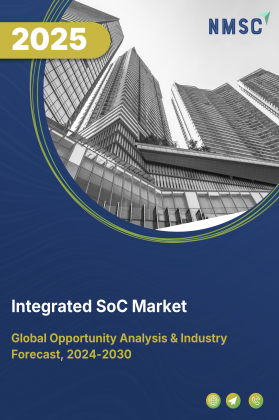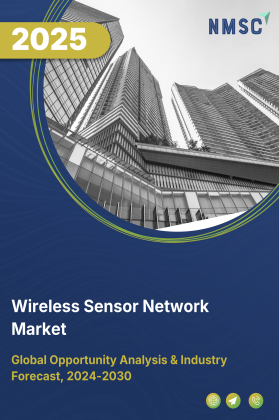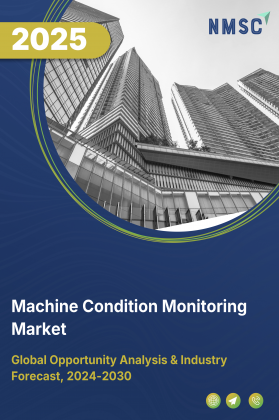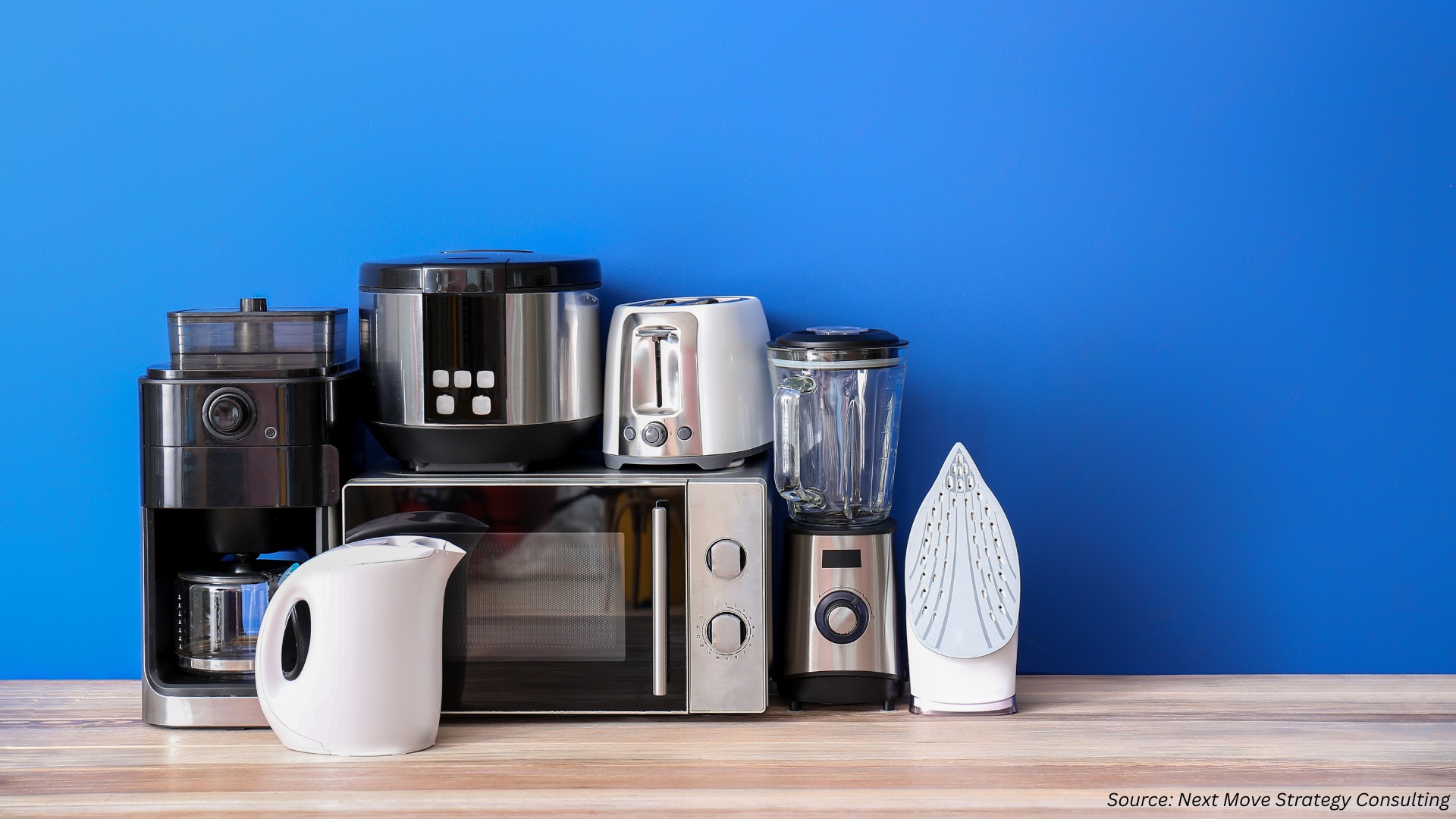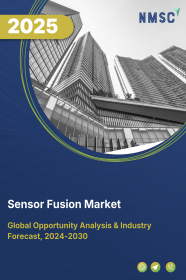
Sensor Fusion Market by Offering (Hardware and Software), by Sensors Type (Accelerometer, Capacitive Sensor, Pressure Sensor, and Others), by Algorithms (Kalman Filter, Bayesian Filter, Central Limit Theorem, and Convolutional Neural Networks), by Technology (Micro-Electro-Mechanical and Non-Micro-Electro-Mechanical), by Application (Smartphones, Tablets, Cameras, and Others), and by End-users (Retail, Medical, Military, and Others) – Global Opportunity Analysis and Industry Forecast 2025-2030
Sensor Fusion Market Overview
The global Sensor Fusion Market size was valued at USD 7.47 billion in 2024 and is predicted to reach USD 20.08 billion by 2030 with a CAGR of 17.9% from 2025-2030
The factors such as the increasing demand for consumer electronics, technological advancements, and expansion of the e-commerce sector drives the growth of the market. However, the high costs associate with sensor fusion hinders the market growth. On the contrary, the introduction of self-learning sensors creates a future opportunity for the market.
Moreover, the top players such as Analog Devices Inc., NXP Semiconductor, Renesas Electronics Corporation are taking various initiates including acquisition and product launches to enhance their market presence and broaden their product portfolios.
These efforts focus on fostering innovation, advancing sensor technologies, and improving efficiency and accuracy in diverse applications. As the market evolves, the growing adoption of intelligent sensor solutions and advancements in automation technologies support consistent growth and drive wider implementation across industries.
Increasing Demand for Consumer Electronics Fuels the Market Growth
The sensor fusion industry continues to see steady growth as smartphones, tablets, and wearables of the next generation become more prevalent that utilizes advanced sensors to collect and combine real-time data. According to Global System for Mobile Communications, the global demand for smartphones is rising fast, proposing a total adoption level of 7.5 billion by 2026. This surge in the number of smartphone users is poised to boost the growth of the market, as more devices will require advanced sensor integration to enhance user experiences and functionality.
Technological Advancements Drives the Growth of the Market
The advancement in technology such as artificial intelligence and machine learning algorithms based on sensors is further driving the growth of the sensor fusion market. For instance, in December 2022, Intuitive Surgical Inc.
launched new AI-based sensor modules the M4.5S and the M4.3WN. The sensor modules integrated depth sensing and image processing with AI and VSLAM capabilities in order to provide robotic devices with a human-like visual understanding for obstacle detection and object recognition.
Growth in E-Commerce Sector Boosts the Market Expansion
The growth of the e-commerce sector drives the expansion of the market due to the increased requirement for efficient logistics and automation systems. These systems make warehouse management, operations of robotics and the tracking of delivery to be elaborate by accessing data collected from various sensors.
The report published by the International Trade Administrative, global business to business e-commerce is expected to rise at a CAGR of 14.5 percent through 2026. This growth in the e-commerce increases the need for developed and integrated sensor data processing solutions that promotes the use of the technology in logistics and direct automation industries attributed to the growing high demand for improvement on efficiency and accuracy in the business operations.
High Costs Hinders the Growth of the Market
The sensor fusion market growth is significantly hindered by two primary factors: high development costs and the risk of malfunction. The development and maintenance of advanced sensor systems require substantial financial investment due to the complexity of integrating various sensor types, which can deter widespread adoption.
Introduction of Self-Learning Sensors Creates a Future Opportunity for the Market
The introduction of self-learning sensors is expected to create future opportunities for the industry. These advanced sensors adapt and improve their performance using collected data, boosting accuracy, efficiency, and responsiveness that drives innovation in the sensor fusion market expansion.
Market Segmentations and Scope of the Study
The fusion sensor market report is segmented on the basis of component, sensor type, algorithms, technology, application, end-users, and region. On the basis of component, the market is distributed into hardware and software. On the basis of sensor type, the market is divided into accelerometers, capacitive sensors, pressure sensors, temperature sensors, touch sensors, radar sensors, and image sensors. On the basis of algorithms, the market is segmented into kalman filter, bayesian filter, central limit theorem, and convolutional neural networks. On the basis of technology, the market is classified into the micro-electro-mechanical system and non-micro-electro-mechanical system. On the basis of application, the market is segmented into smartphones, tablets, cameras, tv remotes, and video games. On the basis of end-users, the market is divided into retail, consumer electronics, automotive, medical, and military. Regional breakdown and analysis of each of the aforesaid segments include regions comprising of North America, Europe, Asia-Pacific, and RoW.
Geographical Analysis
Asia-Pacific dominates the sensor fusion market share and is expected to continue its dominance during the forecast period. This is attributed to the increased number of mobile panels represented by smart phones, tablets, laptops and wearables in the region.
The Global System for Mobile Communications Association (GSMA) estimates that 76 percent of the population in the Asia-Pacific accessed smartphones in 2022 and is anticipated to rise to 94 percent by 2030. The increasing adoption of smartphones, coupled with the wider internet usage, is expected to fuel market growth.
In addition, government introducing stringent policies within the region, regulations being pushed forward to mandate advanced driver assistance systems (ADAS) are driving market growth. The Ministry of Road Transport and Highways proposed making autonomous emergency braking and electronic stability control (ESC) mandatory in vehicles that directly increase the adoption of sensor fusion technologies in order to meet safety standards.
On the other hand, North America is expected to experience steady growth in the sensor fusion industry, largely due to increasing government investments in the aerospace and defense sector. According to a report by the U.S. Government, the Department of Defense received USD 2.09 trillion in budgetary resources, with USD 973 billion allocated for advancing the military sector and developing cutting-edge weapons, UAVs, and other tactical equipment. This significant rise in government funding is a key driver of market growth in the region, as it fosters the adoption of advanced sensor technologies in defense applications.
Moreover, the presence of key market players such as VERSES, Maxim Integrated, and InvenSense Inc. and their continuous innovation and product launches plays a major role in the growth of the industry. For instance, in September 2022, VERSES announced the launch of an artificial intelligence lab and sensor fusion research facility in California. Through this launch, the company aims to develop and launch solutions based on this research techniques.
Competitive Landscape
Various key market players operating in the fusion sensor industry include Analog Devices Inc., NXP Semiconductor, Renesas Electronics Corporation, Bosch Sensortec GmbH, InvenSense Inc., Infineon Technologies AG, STMicroelectronics, Asahi Kasei Microdevices, BASELABS, Maxim Integrated, TDK Corporation, ROHM Group Company, Ceva, Inc., NVIDIA Corporation, Murata Manufacturing Co., Ltd., and others. These market players are adopting various strategies such as product launches to remain dominant in the market.
For instance, in January 2024, NXP Semiconductors launched the SAF86xx, an advanced one-chip radar with a high-performance radar transceiver, a multi-core radar processor, and a MACsec hardware engine for secure automotive ethernet communication. The sensor improves advanced driver-assistance systems and autonomous driving by offering 360-degree fusion, AI-powered object detection, and streaming low-level radar data at speed of up to 1 Gbit/s.
Key Benefits
-
The report provides quantitative analysis and estimations of the sensor fusion market from 2025 to 2030, which assists in identifying the prevailing industry opportunities.
-
The study comprises a deep-dive analysis of the current and future sensor fusion market trends to depict prevalent investment pockets in the industry.
-
Information related to key drivers, restraints, and opportunities and their impact on the sensor fusion market industry is provided in the report.
-
Competitive analysis of the key players, along with their market share is provided in the report.
-
SWOT analysis and Porters Five Forces model is elaborated on the study.
-
Value chain analysis in the market study provides a clear picture of roles of stakeholders.
Sensor Fusion Market Key Segments
By Component
-
Hardware
-
Software
By Sensor Type
-
Accelerometer
-
Capacitive Sensor
-
Pressure Sensor
-
Others
By Algorithms
-
Kalman Filter
-
Bayesian Filter
-
Central Limit Theorem
-
Convolutional Neural Networks
By Technology
-
Micro-Electro-Mechanical
-
Non-Micro-Electro-Mechanical
By Application
-
Smartphones
-
Tablets Cameras
-
Others
By End-Users
-
Retail
-
Medical
-
Military
-
Others
By Region
-
North America
-
The U.S.
-
Canada
-
Mexico
-
-
Europe
-
The UK
-
Germany
-
France
-
Italy
-
Spain
-
Denmark
-
Netherlands
-
Finland
-
Sweden
-
Norway
-
Russia
-
Rest of Europe
-
-
Asia-Pacific
-
China
-
Japan
-
India
-
South Korea
-
Australia
-
Indonesia
-
Singapore
-
Taiwan
-
Thailand
-
Rest of Asia-Pacific
-
-
RoW
-
Latin America
-
Middle East
-
Africa
-
Key Players
-
Analog Devices Inc.
-
NXP Semiconductor
-
Renesas Electronics Corporation
-
Bosch Sensortec GmbH
-
InvenSense Inc.
-
Infineon Technologies AG
-
STMicroelectronics
-
Asahi Kasei Microdevices
-
BASELABS
-
Maxim Integrated
-
TDK Corporation
-
ROHM Group Company
-
Ceva, Inc.
-
NVIDIA Corporation
-
Murata Manufacturing Co., Ltd.
REPORT SCOPE AND SEGMENTATION:
|
Parameters |
Details |
|
Market Size in 2024 |
USD 7.47 Billion |
|
Revenue Forecast in 2030 |
USD 20.08 Billion |
|
Growth Rate |
CAGR of 17.9% from 2025 to 2030 |
|
Analysis Period |
2024–2030 |
|
Base Year Considered |
2024 |
|
Forecast Period |
2025–2030 |
|
Market Size Estimation |
Billion (USD) |
|
Growth Factors |
|
|
Countries Covered |
28 |
|
Companies Profiled |
15 |
|
Market Share |
Available for 10 companies |
|
Customization Scope |
Free customization (equivalent up to 80 working hours of analysts) after purchase. Addition or alteration to country, regional, and segment scope. |
|
Pricing and Purchase Options |
Avail customized purchase options to meet your exact research needs. |





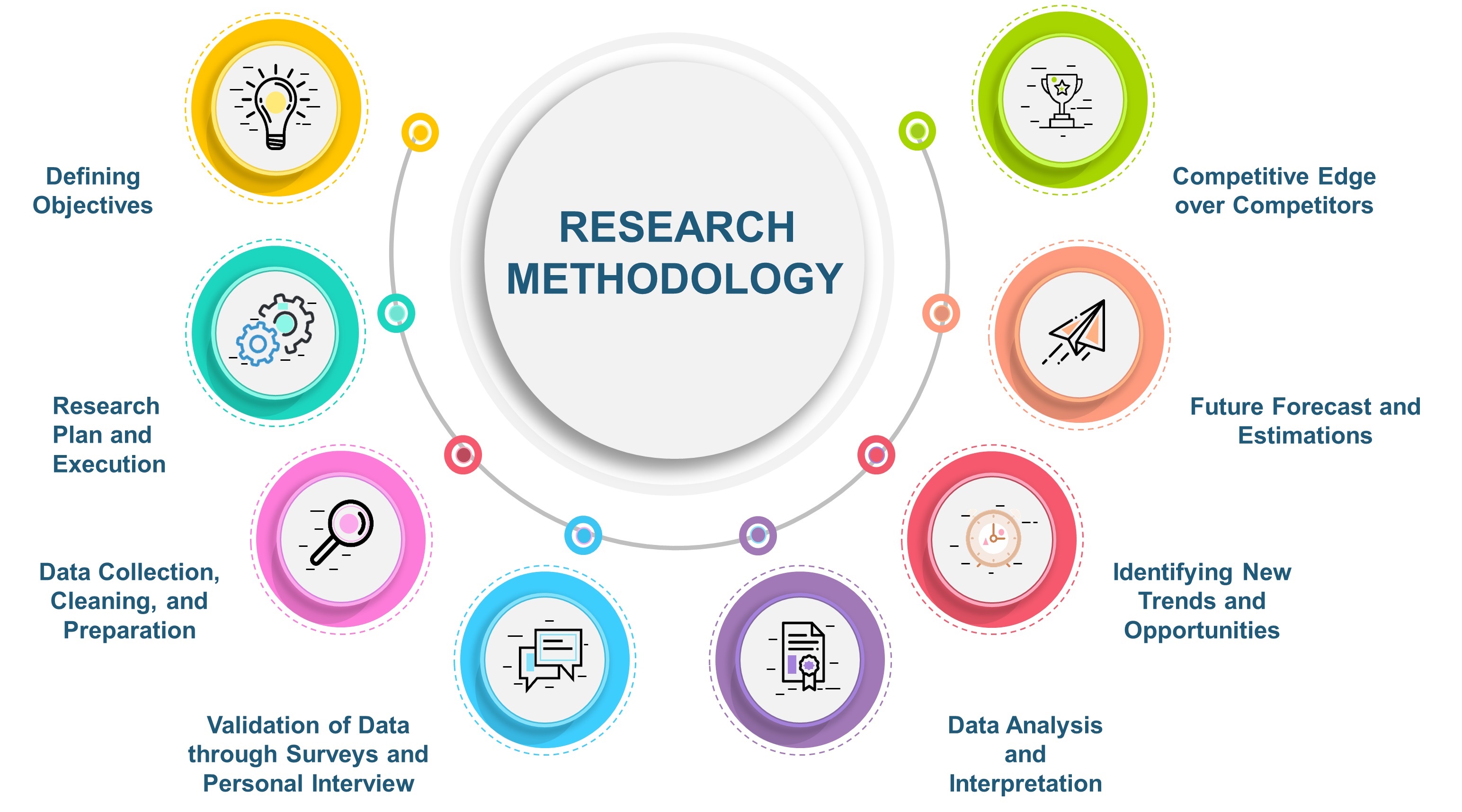
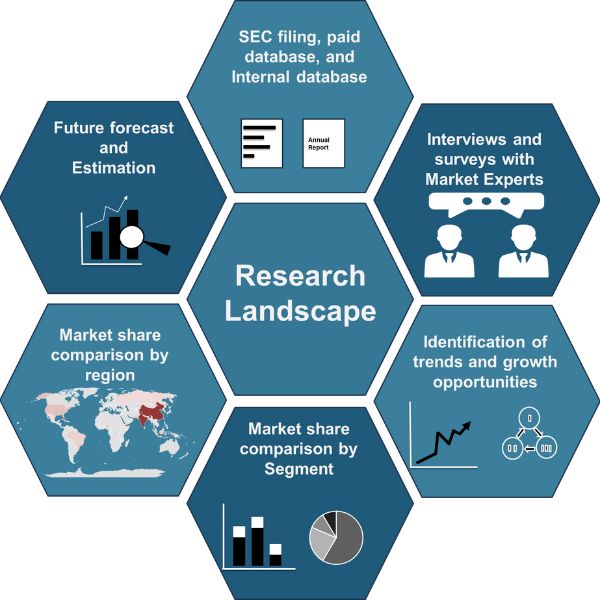
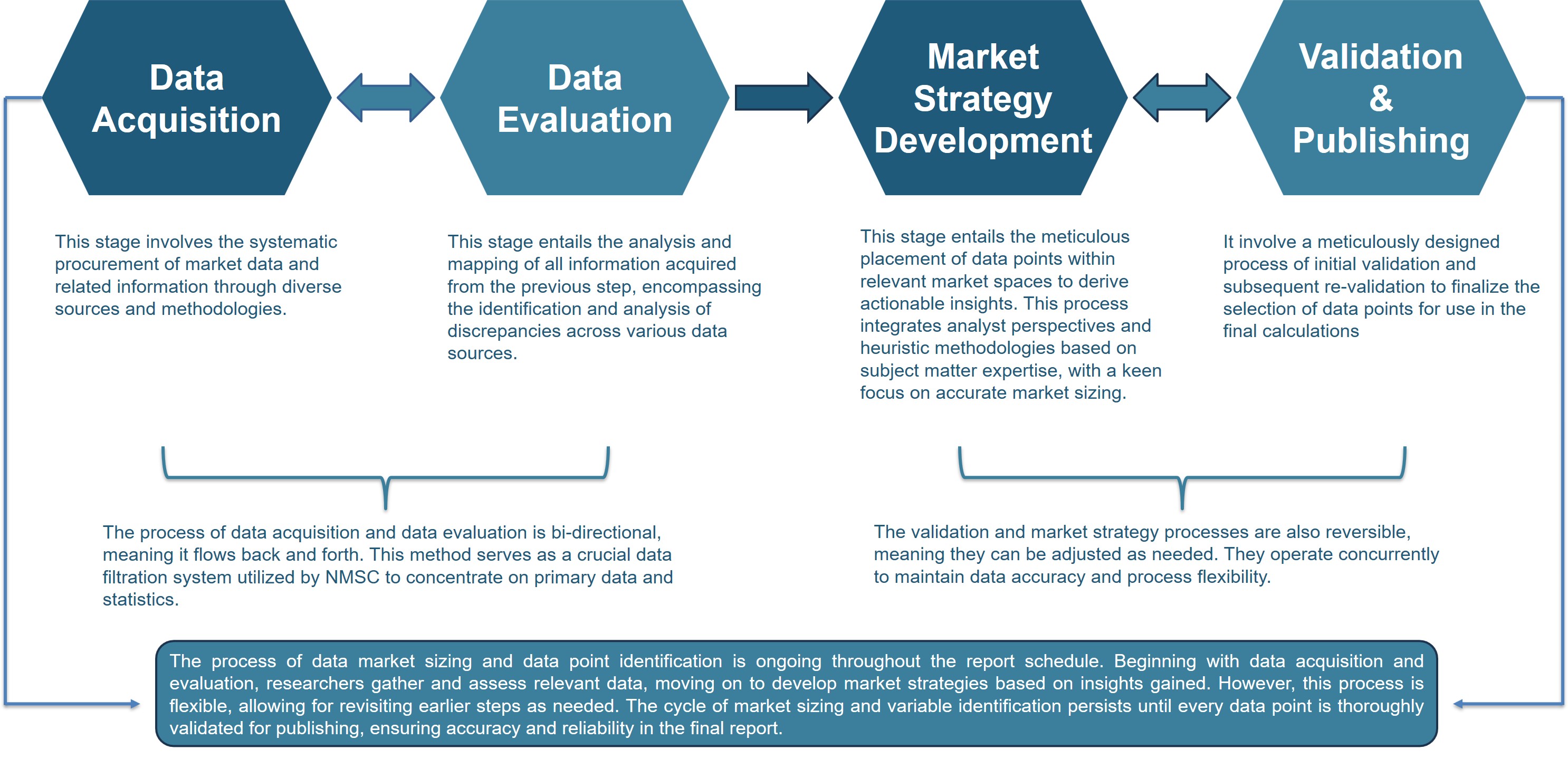
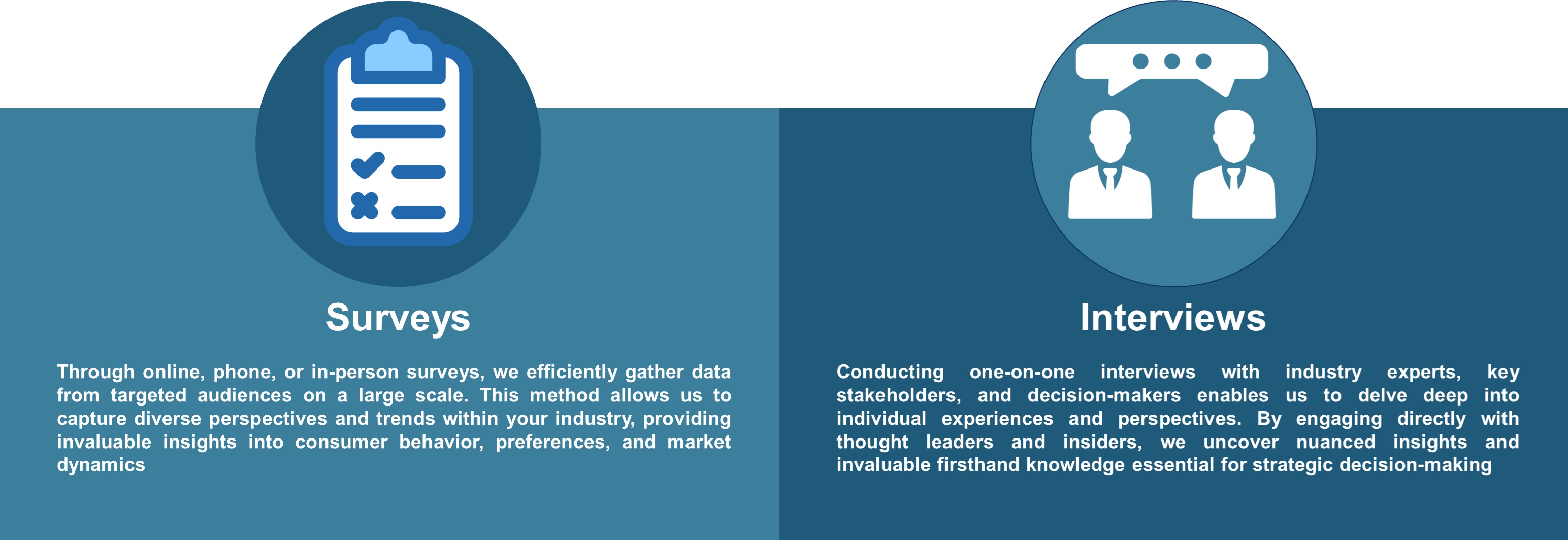


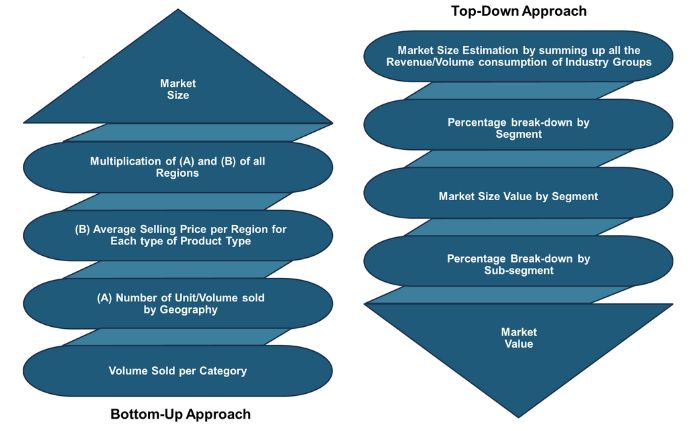
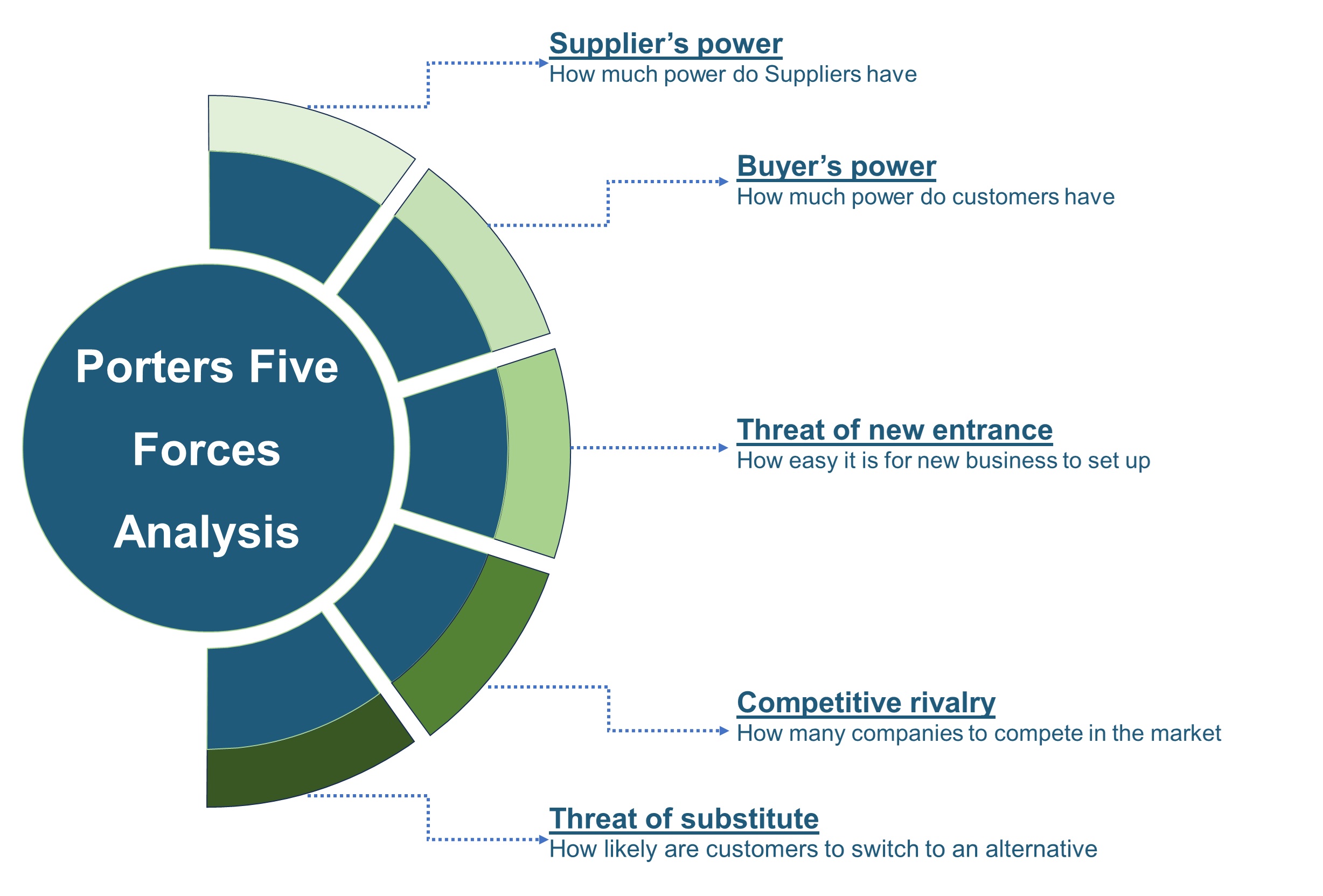







 Speak to Our Analyst
Speak to Our Analyst



